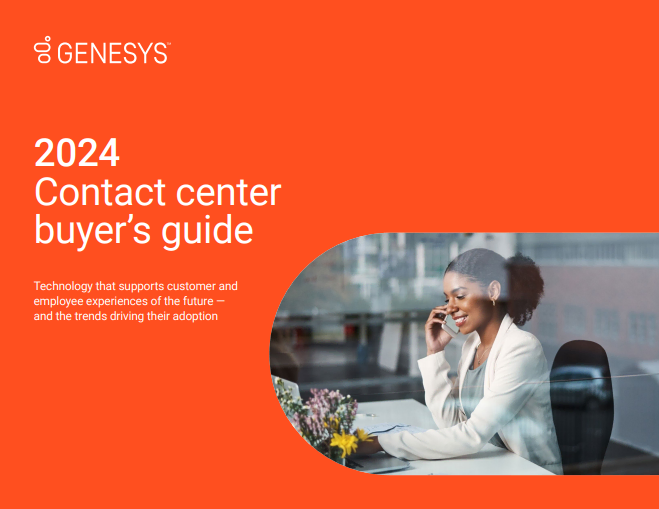Your Genesys Blog Subscription has been confirmed!
Please add genesys@email.genesys.com to your safe sender list to ensure you receive the weekly blog notifications.
Subscribe to our free newsletter and get blog updates in your inbox
Don't Show This Again.

Business and tech trends are dynamic. Some accelerate while others lose value as more innovative solutions emerge. To make the best contact center technology purchasing decisions, it’s important to keep up with where markets are going. Then apply that knowledge to use cases that serve your business goals.
To make informed buying decisions, make certain your long-term needs are clear and logical — and they follow customer experience trends. By tracking emerging trends in contact center technology and how they can impact your business, you can focus on specific categories where you’ll build your best use cases.
Let’s look at four of the “big” contact center trends in this age of artificial intelligence (AI) and the cloud.
Bringing together customer and employee touchpoints can reveal invaluable insights to improve all their experiences.
This is the fundamental capability and power of a cloud platform. It enables you to maintain a single view of customers and their journeys — and to use those insights in meaningful ways. By connecting all interactions, you can build differentiated experiences.
But not all cloud platforms support long-term contact center technology trends or your unique — and evolving — plans for growth. Consider specific issues with resiliency, availability and the ability to innovate and grow.
When you’re exploring contact center technology or making purchasing decisions, ask prospective vendors the following questions:

Explore the capabilities you need to create the most value for customers and employees. And get key questions to ask when making technology buying decisions.
Many businesses start their digital journeys with self-service capabilities. Today, consumers use an average of almost six touchpoints with nearly 50% regularly using more than four. Your digital customer experience strategy needs to be connected and cohesive to give customers a consistent experience — and that consistency includes voice.
These connections enable you to transform experiences with personalization and then optimize those experiences based on contextual understanding of who’s engaging with you — and why.
An all-in-one suite of digital capabilities — enhanced with bots and predictive artificial intelligence (AI) — simplifies the way your agents engage with customers and each other, on any digital channel. The cloud eliminates the silos between channels for streamlined customer journey. No matter which channel is used during the journey, customers and agents have a centralized and consistent experience.
When all your channels, tools and the insights are captured and connected in one place, you can support and manage the entire contact center as you optimize experiences.
Ask prospective vendors:
At its core, the value of AI is in the wide range of capabilities it enables that support innovation. This includes conversational AI services with generative AI for automation that also enables a human touch. Using this embedded power of data and automation, businesses can create new products and services, streamline operations, and enhance the experiences of customers and employees.
As you explore AI capabilities, predictive AI can equip your businesses with deeper customer insights for personalization and accurate forecasts to improve workforce planning. And because implementation and maintenance are simplified with embedded capabilities, AI reduces overall costs and complexity.
Out-of-the-box use cases mean you’ll realize AI value faster by personalizing services and automating tedious tasks, especially for call center agents.
Ask prospective vendors:
Establishing trust is vital. You and your customers should feel confident that the AI systems you use will protect their data and privacy, while operating reliably, accurately and ethically. Designing for transparency and trust aligns with customer perceptions of your brand. When they see the benefits of sharing their data in the form of more personalized experiences, it builds trust and loyalty.
The Genesys State of Customer Experience report found that 81% of consumers say they’d purchase additional items from companies that consistently personalized their experience. This also makes it less likely they’ll change to brands that don’t use their data to personalize experiences.
There are many ways to build trust through transparency, such as how you use AI algorithms, granting access to data sources and training models. Being up front about processes and accountability solves problems before they arise. And it equips teams to understand the impact on operations.
Ethical AI practices, robust data governance and comprehensive frameworks encourage acceptance of AI technologies.
Ask prospective vendors:
Digging into the specific capabilities — and promises — that vendors offer helps ensure that the customer experience you deliver today uses the best contact center technology. That innovation should continue as the foundation of differentiating your services for many years to come.
For more relevant questions to ask vendors about how their technology will support your long-term plans, read our 2024 contact center buyer’s guide.
Subscribe to our free newsletter and get blog updates in your inbox.